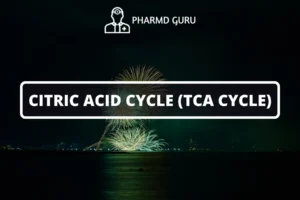DNA replication is a fundamental process that allows living organisms to faithfully transmit genetic information from one generation to the next. It is the mechanism by which DNA molecules are duplicated, ensuring the accurate replication of the genetic code. In this article, we will explore the intricacies of DNA replication, including its significance, the enzymes involved, and the overall process that enables the preservation of genetic information.
SCROLL DOWN TO THE BOTTOM OF THE PAGE FOR ACTUAL NOTES
Table of Contents
- Introduction to DNA Replication
- Significance of DNA Replication
- Enzymes Involved in DNA Replication
- 3.1 DNA Helicase
- 3.2 DNA Polymerase
- 3.3 DNA Ligase
- 3.4 Primase
- 3.5 Topoisomerase
- Process of DNA Replication
- 4.1 Initiation
- 4.2 Elongation
- 4.3 Termination
1. Introduction to DNA Replication
DNA replication is the process by which DNA molecules are copied to generate identical daughter molecules. It occurs during the cell cycle when a cell prepares to divide and ensures that each new cell receives a complete set of genetic information. DNA replication is crucial for the inheritance of genetic traits and the perpetuation of life.
2. Significance of DNA Replication
DNA replication is essential for several reasons:
- Genetic continuity: DNA replication ensures that genetic information is accurately passed from parent to offspring, preserving the continuity of traits across generations.
- Cellular division: DNA replication is a prerequisite for cell division, as each daughter cell must receive a full complement of genetic material.
- Repair and growth: DNA replication allows cells to repair damaged DNA and grow by synthesizing additional DNA during development and tissue repair.
3. Enzymes Involved in DNA Replication
Several enzymes play critical roles in DNA replication, each with specific functions and contributions to the overall process:
3.1 DNA Helicase
DNA helicase unwinds the double-stranded DNA molecule, separating the two strands and creating a replication fork. It uses ATP hydrolysis to break the hydrogen bonds holding the DNA strands together, providing single-stranded DNA templates for replication.
3.2 DNA Polymerase
DNA polymerase is responsible for synthesizing new DNA strands complementary to the template strands. It reads the template strand in the 3′ to 5′ direction and adds nucleotides in the 5′ to 3′ direction, catalyzing phosphodiester bond formation. DNA polymerase also possesses proofreading capabilities, ensuring the accuracy of replication.
3.3 DNA Ligase
DNA ligase seals the gaps between newly synthesized DNA fragments, called Okazaki fragments, on the lagging strand. It catalyzes the formation of phosphodiester bonds, joining the fragments into a continuous DNA strand.
3.4 Primase
Primase synthesizes short RNA primers on the DNA template strands. These primers provide a starting point for DNA polymerase to initiate replication.
3.5 Topoisomerase
Topoisomerase relieves the tension that builds up ahead of the replication fork by temporarily breaking and resealing the DNA strands. It prevents supercoiling and maintains the stability of the DNA molecule during replication.
4. Process of DNA Replication
DNA replication occurs in a semiconservative manner, where each original DNA strand serves as a template for the synthesis of a new complementary strand. The process can be divided into three main stages:
4.1 Initiation
Initiation begins at specific sites called origins of replication. The DNA helicase binds to the origin and unwinds the double helix, forming a replication bubble. DNA polymerase and other replication proteins assemble at the replication fork.
4.2 Elongation
Elongation involves the synthesis of new DNA strands using the template strands as guides. DNA polymerase adds nucleotides to the growing DNA strands, extending them in the 5′ to 3′ direction. The leading strand is synthesized continuously, while the lagging strand is synthesized discontinuously in short Okazaki fragments.
4.3 Termination
Termination occurs when DNA replication is complete. The replication forks meet at specific termination sites, and the newly synthesized DNA strands are proofread for errors. The DNA ligase seals the remaining gaps in the DNA, resulting in two complete and identical DNA molecules.
ACTUAL NOTES




